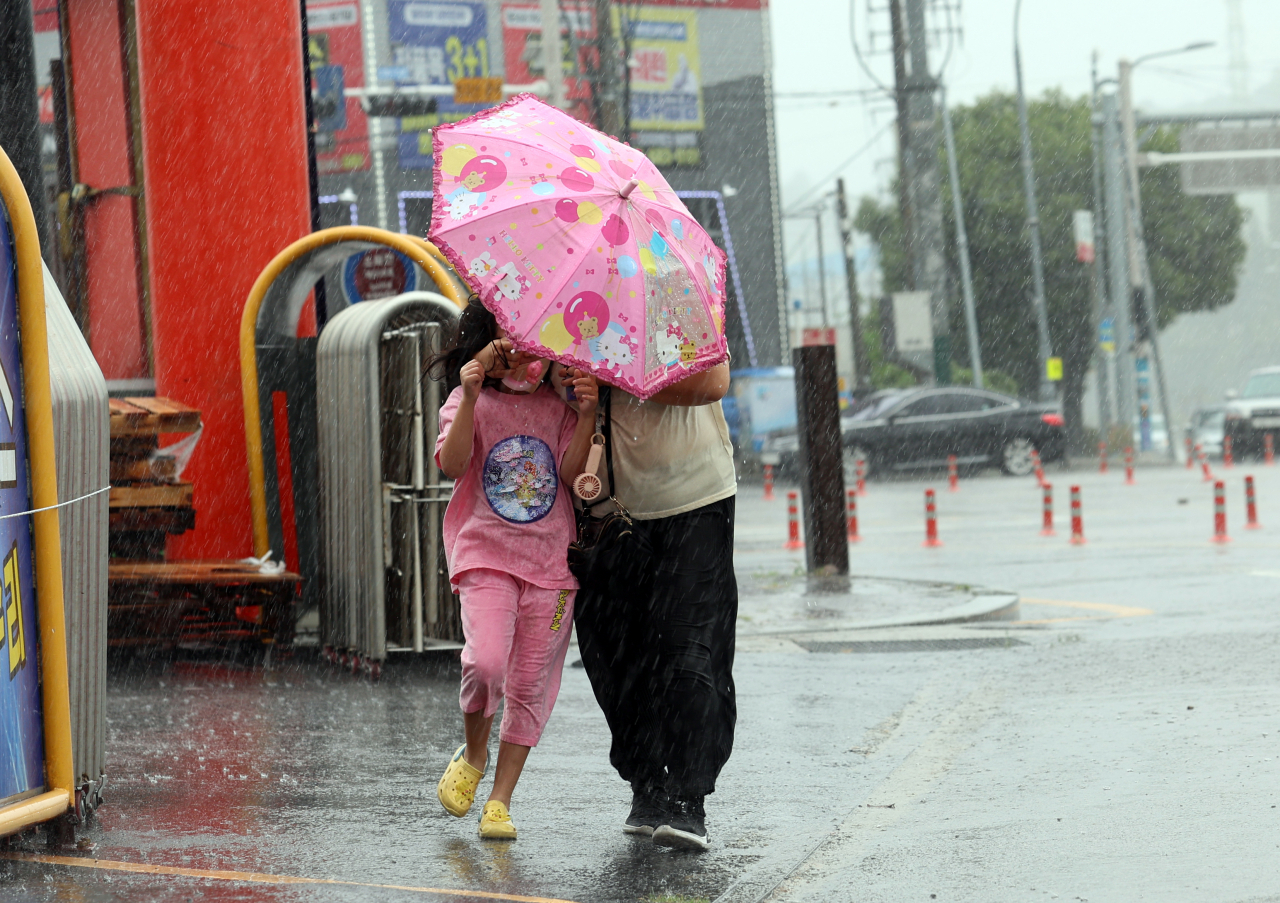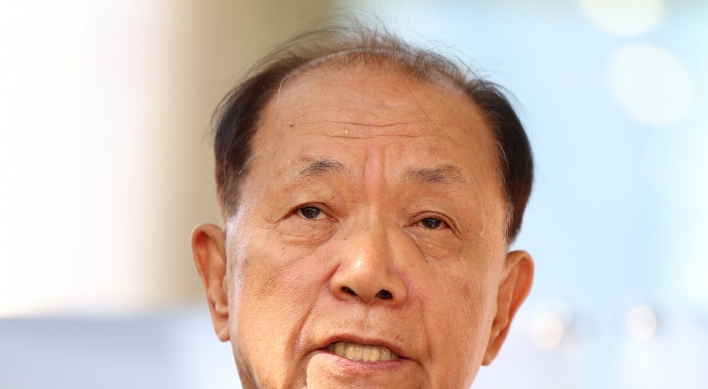
South Korea was bracing for one of the most destructive typhoons in years as Typhoon Khanun, accompanied by copious rainfall and destructive winds, pummeled the country on Thursday.
The Korea Meteorological Administration said Khanun, which means “jackfruit” in Thai, could be the first to traverse the entire Korean Peninsula from south to north, threatening to bring extensive destruction in its wake. The projected route also could mirror that of Typhoon Rusa in 2002, which was the costliest typhoon in history, the KMA predicted.
Typhoon Rusa, which derives from the Malaysian term for “deer,” slammed Goheung in South Jeolla Province on Aug. 31, 2002, leaving 246 people either missing or dead. It made a slow and brutal pass over the country at a speed of 15 kilometers per hour.
Khanun, too, was moving at a relatively low speed of 35 kilometers per hour as of 3 p.m., the KMA said, and will likely linger over the peninsula until Friday morning.
A slow-moving typhoon poses more threats if it is in no hurry to exit because it gathers more water and has more time to release it as it passes through. Big rain dumps, for example, flood rivers, streams and roads, putting properties at risk and damage farmlands.
Also, when Rusa hit the country, Korea witnessed a record-high rainfall of 870.5 millimeters in a day in Gangneung, Gangwon Province -- the highest precipitation since 1904, when the country started keeping weather records. Property damage amounted to 5.15 trillion won ($3.91 billion), also the highest in history.
Rusa was the fourth-deadliest typhoon since 1951 when Typhoon Sarah struck the Korean Peninsula in September 1959. The typhoon left 849 either missing or dead and remained the most destructive typhoon on record in the western Pacific Ocean.
Some of the worst typhoons to wreak havoc in Korea over the decades were Typhoon Betty, also known as Typhoon Mawar, in August of 1972, causing 550 human casualties, and Typhoon Thelma, also dubbed Typhoon Katring, which left at least 345 missing or dead. Typhoon Maemi, which pounded the southeastern part of the Korean Peninsula in 2003, killed and injured at least 246 people.
The most costly typhoons after Rusa include Typhoon Ewiniar -- the third storm of the 2006 Pacific typhoon season that lasted for 12 days as a tropical cyclone -- which caused 1.83 trillion won in property damage. Typhoon Olga in 1999 racked up 1.49 trillion won in costs.
KMA data shows 236 typhoons have passed through the Korean Peninsula from 1951 until 2022.
By month, August saw the most typhoons at 83, followed by 72 in July, 50 in September, 23 in June, five in October and three in May.






![[KH Explains] No more 'Michael' at Kakao Games](http://res.heraldm.com/phpwas/restmb_idxmake.php?idx=644&simg=/content/image/2024/04/28/20240428050183_0.jpg&u=20240428180321)











![[Herald Interview] Mistakes turn into blessings in street performance, director says](http://res.heraldm.com/phpwas/restmb_idxmake.php?idx=652&simg=/content/image/2024/04/28/20240428050150_0.jpg&u=20240428174656)
